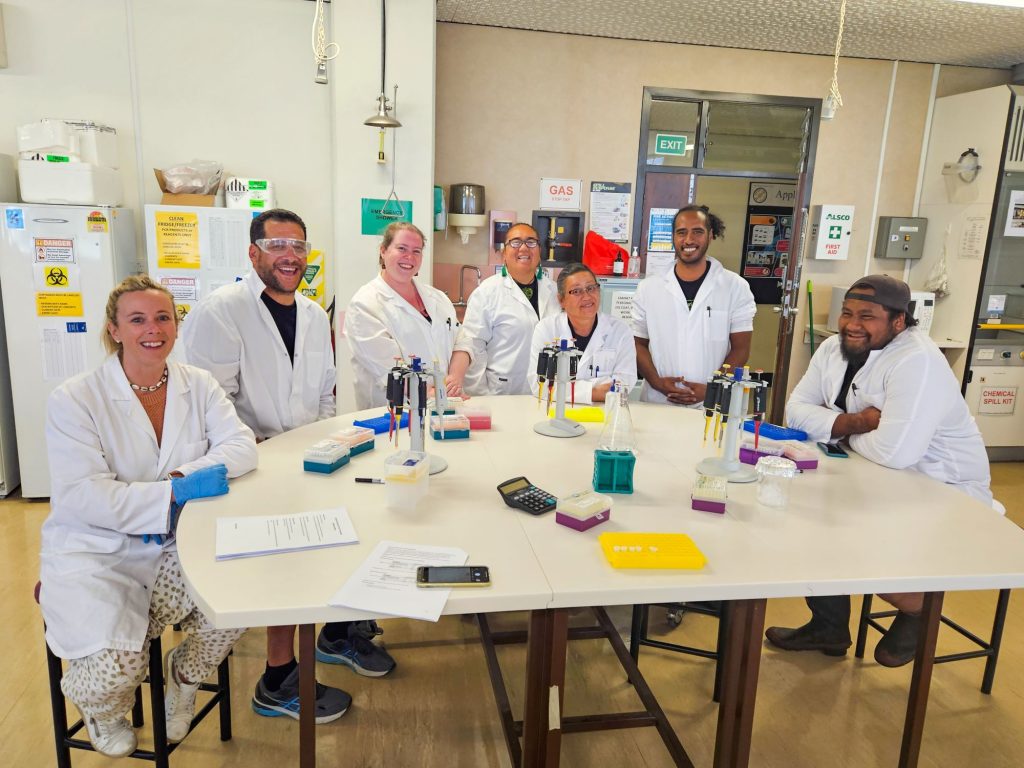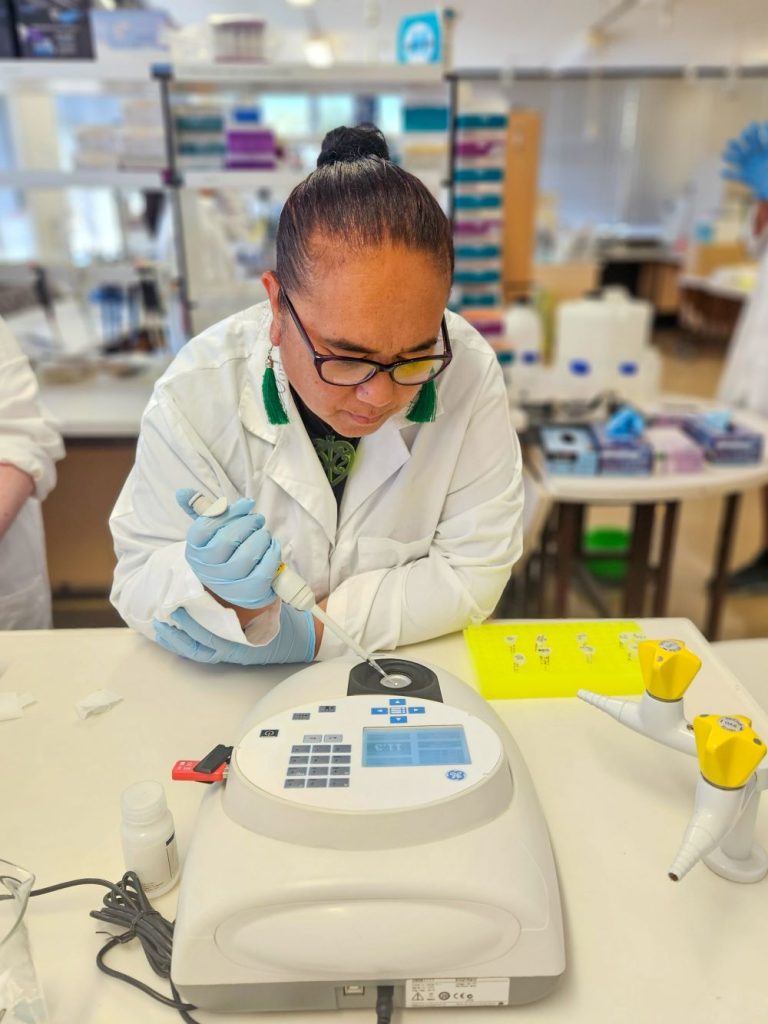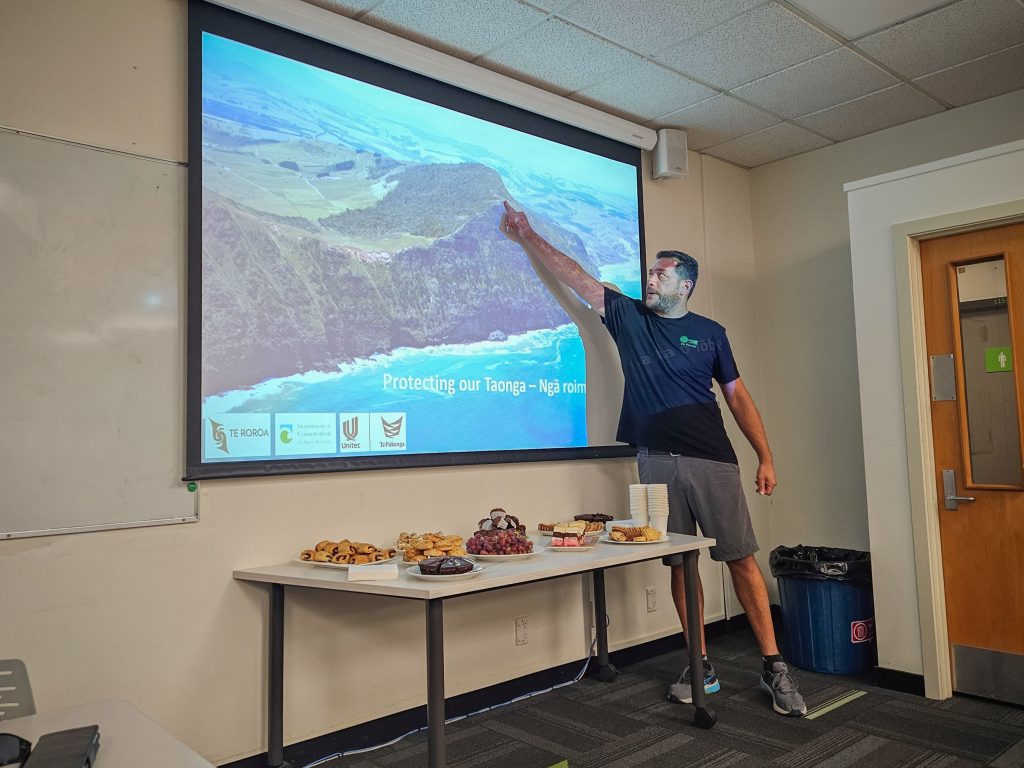The Applied Molecular Solutions Research Centre and Te Roroa are co-partners in a Genomics Aotearoa funded project that investigates the conservation genomics of ngā Roimata ō Tohe, a critically endangered plant of cultural significance to Te Roroa. See more about this project here. Integral to this kaupapa is a knowledge-sharing approach and mahi Kotahitanga between tangata whenua and western science.
In January 2024, AMSRC attended a hui hosted by Te Roroa that brought together the knowledge and perspectives of Te Roroa and the scientific expertise of the AMSRC. Held in Waipoua, the hui celebrated connection, respect, and shared vision. Whakawhanaungatanga was at the forefront of the hui. New introductions were made with the sharing of whakapapa to lay the groundwork for kaupapa rooted in understanding and shared commitment.
Te Roroa iwi, with their mātauranga and spiritual connection to the whenua, provided invaluable insights into the ecological and cultural significance of ngā Roimata ō Tohe. Their aims and objectives for the kaupapa were explained and their recommendations at the hui ensured that the research would be conducted in a manner that respected and honoured tikanga and kawa. The AMSRC team introduced to the specimens of ngā Roimata ō Tohe and the nursery where Te Roroa have been carefully propagating the only remaining plants. Sarah Wells and Peter de Lange from AMSRC assisted Te Roroa in collecting and identifying samples from the plants for genomic analysis.

Building on this Kotahitanga, in March 2024 Te Roroa iwi were hosted by AMSRC during a week-long intensive workshop at the research centre. This week was dedicated to the transfer and sharing of knowledge, focusing on the molecular techniques with the samples collected by Te Roroa from their nursery. The week began with a pōwhiri to welcome Te Roroa on to Te Noho Kotahitanga marae at the Unitec campus, followed by further whakawhanaungatanga with additional members of the AMSRC team. The rest of the week involved hands-on learning in the critical steps to obtaining high quality genomic data, with a focus on DNA extraction techniques and QC in preparation for next-generation sequencing. Under the guidance of AMSRC staff, Te Roroa members worked with the plant samples they had collected from their nursery. The purpose of this session was not only to mahi the technical steps of genomic analysis but also to promote kaitiakitanga by transferring to Te Roroa the capability to independently perform these techniques.
The final day of the workshop was dedicated to reflection and planning for future aspects of the project. The research team came together to share their experiences and insights from the week. As an appropriate close to the week of mahi kotahitanga, the Unitec Environmental and Animal Sciences students and staff were treated to an insightful talk by Taoho Patuawa, Te Roroa’s science advisor, in which he discussed the conservation projects that Te Roroa are involved in and outlined the importance of Te Tiriti-based partnerships in research.


The Ngā roimata ō Tohe samples have now been sent for genotyping-by-sequencing at AgResearch Invermay. This kaupapa exemplifies the power of combining traditional Māori knowledge and insight with modern science to achieve common goals. Both parties are committed to the conservation and protection of ngā Roimata ō Tohe, recognizing its importance not only to the biodiversity of the region but also to the cultural heritage of Te Roroa.